The financial bubble that gripped Taiwan in the 1980s is one of the greatest that the world has ever seen. Stock prices went up by more than 12x in less than four years.
At the peak of the bubble, over 5 million - one-third of all Taiwanese over the age of 15 - were actively playing the stock market.
This is the story about the boom and the bust of Taiwan’s little-discussed but spectacular stock market bubble, as retold in the book The Great Taiwan Bubble by Steven Champion.
An emerging market success story (1949-1985)
After losing the Chinese civil war in 1949, the head of the Nationalist government Chiang Kai-shek and two and a half million of his followers evacuated to the island of Taiwan. Taiwan then became the base of the new “Republic of China” (Taiwan), with a government run by Chiang Kai-shek’s Kuomintang party.
The first years were tumultuous. Millions of refugees scattered the island. Job opportunities were scarce. Inflation wiped out the savings of many individuals.
Chiang Kai-shek was determined to weed out corruption and correct many of the mistakes that had been made in China. Any individual with a checked history was disallowed from serving in the government. Public policy in the new Republic of China became more conservative than it had been in the 1940s.
A key reform that the government undertook was a redistribution of land. Between 1951 and 1953, the government redistributed 430,000 acres of land from large, private landholdings to individuals. The landlords received payment for their land through ten-year government bonds and shares of government-owned companies. Inflation would later eat up most of the value of the bonds. So the land reform essentially transferred resources from the land-owning class to individuals. Farm productivity rose in the process.
The economic policy then shifted to the promotion of manufacturing exports. Taiwan experienced an export boom that continued from the 1950s all the way to the 1990s:
In the 1970s, the United States and many other countries in the global community derecognised Taiwan in favour of the People’s Republic of China. Taiwan was forced to exit from both the IMF and the World Bank. A sense of isolation and siege only made the government more fiscally conservative.
In 1980, emerging market investor Marc Faber described the Taiwanese stock market as sleepy and isolated:
“[Taiwan is] a moribund and illiquid market which was locally and internationally ignored in favor of the then-fashionable hard asset plays like gold and silver. Visiting the island's largest brokerage, he described the company's employees as shocked by the unprecedented event of a foreigner's visit.”
At the time, Taiwan’s “The Central Bank of China” (CBC) was the most autonomous of any central bank in East Asia. Capital controls were tight, there was minimal offshore borrowing, and the New Taiwan Dollar was nailed to the US Dollar for a quarter of a century until the mid-1980s.
One consequence of booming exports and a fixed exchange rate was an accumulation of foreign exchange reserves. By the mid-1980s, Taiwan’s foreign exchange reserves were only slightly smaller than Japan’s - a country with five times the population. The reserves would grow even bigger before the decade was over.
Banking reforms began in the mid-1970s. The government faced increased criticism that the formal banking sector was misallocating capital. And so from 1980, banks were therefore allowed to set their own rates on money-market products. In 1985, the bands within which regulated bank interest rates had to be set were widened. Interest rates on foreign currency deposits were also deregulated. This type of financial deregulation led to an explosion in mortgage and consumer lending.
Between 1980 and 1985, the number of foreign banks operating in Taiwan increased from 12 to 32. Faced with this reality, both the old and the new banks began to diversify their portfolios by following going down market and lending to local companies that were medium-sized by international standards - at best.
With booming exports, Taiwan’s current account surplus boomed and reached 19% of gross national income by the mid-1980s. As hot money flowed into the country, in 1985, the CBC finally allowed the Taiwan Dollar to appreciate:
Before 1983, there wasn't really any effective, legal way for an international investor to buy Taiwanese stocks. In the mid-1980s, however - the stock market was finally opened to foreign investors. Money started pouring in.
Capital inflows caused interest rates to plummet. Meanwhile, households felt loss aversion now that their bank deposits yielded almost nothing. So they sought higher in other financial instruments. Some of that money ended up in the stock market.
The Republic of Casino (1985-1988)
In 1985 - at an early stage of the bubble - the Taiwan Capitalization Weighted Stock Index (Taiex) was trading around the 700-mark. It had come off a bit from a previous high in 1984, but not many people were paying attention to the market yet. That would soon change.
An illegal lottery called “Dajia Le” (大家樂) was launched in 1985. It spread like wildfire through the nation, especially in Central and Southern Taiwan. For as little as 300 or 500 Taiwan Dollars, you picked a number from 00 to 99 and could get a jackpot of 15-19x - far more than any of the state-sponsored lotteries. It became a great success throughout Taiwan. Suddenly, just about everybody was into illegal gambling.
The reason why Dajia Le flourished was because of the economic slump in the summer of 1985. The unemployment rate increased to a decade-high of 4.1% and 320,000 unemployed Taiwanese were walking the streets in search of jobs. Many of them became disillusioned and turned to gambling.
After a few years, the government cracked down on these illegal lotteries. The state-sponsored Patriotic Lottery ended abruptly in 1987 and illegal lotteries such as Dajia Le were also shut down shortly thereafter due to government pressure.
Author Steven Champion described how hundreds of thousands of these gamblers were then in search of a new fix. He imagined that many of them must have turned into stock market speculation as an outlet for their lust for gambling.
The author worked as a fund manager in Taiwan in the 1980s. In 1986, he observed the market and saw it rise through the key 1,000 level. In his letters to investors, he opined that the market had become extended and suspected it was due for a correction. He just couldn’t imagine that it would rise any further.
Optimism was in the air though. In 1987, Taiwan officially became a democracy and many believed that the future was bright. Martial law was lifted, new political parties were formed and media censorship was eased.
There was scepticism throughout the whole stock market boom, but the scepticism gradually dissipated as bullish voice turned louder. Financial professionals were most nervous when the market bolted through the 1,500 and 2,000 levels but got calmer and calmer as prices went into the stratosphere.
The central bank issued new brokerage licenses and eased listing requirements. There was a huge increase in the number of licensed brokerages, from 27 in June 1988 to 297 in March 1990. Easily available but generally illegal, margin credit was provided through many of these brokers.
The new brokerage firms pushed stocks to retail investors. The larger cities Taipei and Kaohsiung were blanketed with new brokerage offices. The major firms then set up new shops in the secondary cities of Taichung, Tainan, Chiayi, Hsinchu and Changwha. When those reached saturation, brokerage firms finally opened up offices in even the most obscure country villages like Shalu, Fuhsing, Chubei, Huwei, Wuchi, and Huaton. Looking for new market niches, brokers established offices specifically targeted at housewives, doctors, farmers and students to lure more customers in.
In 1985, there were only 400,000 investors in Taiwan. By the end of 1990's first quarter, active brokerage accounts reached 4.6 million in a country with a population of just 20 million:
Suddenly, just about every single Taiwanese became involved in the market. An astonished foreign media jokingly started calling Taiwan “the Republic of Casino” instead of its official name “Republic of China”.
Students at National Taiwan University began to cut morning classes. Primary school teachers quizzed their students to see what stocks their parents were buying. High school girls desperate to accumulate savings to throw into the market turned to part-time prostitution.
60% of financial reporters owned stocks, and 84% of this group admitted their involvement in insider trading. When interviewed, 30% of those reporters admitted to considering abandoning their profession so that they could play the market full time.
In 1988, Taiex broke through the 7,000 mark - up over 10x since 1985. In brokerage offices, retail investors celebrated with champagne and happy faces.
On every street corner, tabloids and magazines were boasting secret knowledge of how to win at stocks. The most popular seminars across the nation were about investing in stocks. The spectacle even attracted Japanese TV stations to fly in a team of reporters to observe the madness.
Three thousand Mercedes-Benzes were purchased that year, briefly making Taiwan the second-largest market in the world. People lined up to buy mink coats worth tens of thousands of Taiwan dollars. Restaurants selling delicacies such as 15,000-dollar abalone were packed with wealthy diners.
Property prices across Taiwan tripled in two years. In Taipei, they increased by a factor of 4.5x in four years. The asking price per ping (equals 3.3 square meters) of new or presold houses in Taiwan went from 60,000 Taiwan dollars in 1987 to 190,000 in 1989 - essentially tripling. In Taipei, housing prices went from 67,200 in 1986 to 368,700 in 1990, increasing by a factor of 5.5x.
Entrepreneurs set up so-called Financial Investment Companies (FICs) that took in money from retail depositors at high interest rates and speculated in stocks and foreign exchange markets. Many of them had connections to Taiwan’s triads, including the Shen Chang-sheng’s (沈長聲) Hong Yuan (鴻源), which was backed by the triad “Four Seas Gang”. Billions of dollars poured in, and other underground FICs sprung up to emulate Hong Yuan’s success.
The way that FICs such as Hong Yuan worked was that for every investment of NT$150,000, you received NT$5,000 in monthly interest and a salary of NT$7,000. Kwang-kuo Hwang, a professor in psychology at National Taiwan University, said:
“Hong Yuan played mind games around its investors… Investors were inundated with rags-to-riches stories and felt pressured to get in on the action. Hong Yuan seduced them with a chance to get rich quick.”
Shen made a fortune through Hong Yuan. Veterans and retired public servants with money in the bank stampeded to join these shady investment firms, eager to begin their “second careers”.
He divorced his wife and married a well-known movie actress called Shih Sze, whose films he secretly bankrolled through Hong Yuan.
To outsiders, Hong Yuan seemed like a black box. Only Shen knew the real state of affairs. Shen hired a mainland investment genius called Yu Yung-ming, who had previously been sentenced to an eight-year jail term in connection with a bank fraud investigation. He was the mastermind behind Hong Yuan’s stock market manipulations of locally listed stocks, which created an enviable track record as long as the stock market was booming. At the peak of the bubble, Hong Yuan controlled a large proportion of Taiwan’s largest companies.
The market wobbled briefly in 1988 but quickly regained momentum. During that year, new president Lee Teng-hui appointed Shirley Kuo as Minister of Finance. To control the stock market bubble, Kuo announced a tax on gains derived from securities transactions. Taiex plummeted for 19 straight days, dropping from above 7,000 to below 5,000. Investors took to the streets and laid siege to the Ministry of Finance and Kuo’s residence. Fearful of losing next year’s elections, the government backed down and cancelled the tax. Stock prices exploded with renewed fervour.
Crescendo (1988-1990)
It only took a few months to recover the previous high. As the market surged through the 6,000 level, then 7,000 and 8,000 stockbrokers held wild celebrations on their trading floors. Brokers offered free champagne, exploding firecrackers, balloons, buffet lunches and musical performances to their most loyal customers.
Among retail investors, attention soon turned towards the almost mystical 10,000 level. Some scoffed at the idea that the market could ever rise that high, but few doubted that it could actually happen.
In June, the index smashed through 10,00 and crowds celebrated on the trading floors. A few months later, the index hit 12,000.
Author Steven Champion, who was managing funds focused on Taiwanese stocks at the time, remembers thinking to himself:
“Once you're beyond the limits of logic, there's no telling where the market will go. I guess that 12,000 isn’t really any crazier than 8,000 or 20,000”
He felt that if the market kept going up while he had his portfolio in cash, his investors would scream. And so he played the game - like everybody else.
A taxi driver recounted that the market worked like magic. He had been able to make a US$5 million fortune and travelled the world. He had been able to buy his wife a diamond-encrusted Rolex. When asked about potential risks in the market, he said:
“I know some people think the market might fall out of bed, but they just don't understand Taiwan.”
At a dinner party at one of the government-controlled bank, a visiting American sounded the warning signal about an overvalued market. Locals had heard such warnings a hundred times before. Bankers in the audience were heard whispering:
“Foreigners just can’t understand our market!”
The compounded return over the previous five years had hit international records. The Taiex had gone from 1,000 points in 1986 to 12,000 in 1990. Stock prices multiplied by more than twelve times in less than four years.
By the fall of 1989, the average price-earnings ratio on the Taiex was 100x - roughly double the already-high P/E multiple of 51x in Japan at the time.
In 1989 every share of every company listed in Taiwan had changed hands just under six times. On peak days in February 1990, trading on the Taipei Stock Exchange exceeded the combined turnover of both the Tokyo and New York stock exchanges.
International investors expressed concern about the market’s overvaluation. In 1989, Marc Faber wrote to his clients:
“We feel that the Taiwan market is currently significantly over-priced...In many ways, the Taiwan boom is comparable to the South Sea Bubble... What event will trigger the decline we do not know, but at the current level of valuation the margin for error has become extremely thin”
When the Taiwan Stock Exchange index closed at 12,495 on February 10, 1990, no one rang a bell to announce that the last breath of air had been blown into the bubble. Nothing special happened in that short, two-hour Saturday trading session to cause the market to begin imploding. But investor psychology had started to shift.
In early 1989, the CBC put the dampers on real estate speculation by capping bank lending to real estate developers and mortgage borrowers. That caused the real estate market to start to wobble.
And in October of 1989, Taiwan was removed from the United States’ list of currency manipulators. Revaluation of the Taiwan dollar halted, and hot money began seeping out.
Investor denial (1990)
In early 1990, the market started wobbling. It looked like the market was taking a rest before scaling new, unchartered heights - just like it had done so many times in the past. But instead, the market entered into a vicious bear market that stunned most retail investors.
Many retail investors thought that the government provided almost guaranteed protection on the downside. The Kuomintang party had used the booming stock market as a slogan for their recent election campaign slogan, “Big Profits and Great Prosperity”. Many interpreted this as an implied guarantee against market losses. Yet despite continued optimism, the market drifted lower.
Trading volume reached new highs just after the crash, with traders doubling down on every single dip.
And then slowly, denial turned to anger, to depression and a gradual acceptance of the new reality.
Taiwan’s stock market bubble was finally over.
The aftershocks (1990 onwards)
After the stock market began its inevitable descent, investors and opposition parties blamed the government for the disastrous result. In a series of protests in 1990, investors begged the government to step in and save the market.
A senior SEC official suffered multiple stab wounds at the hands of an unknown assassin:
Later on, a corporate headquarter of a TSE-listed company was firebombed.
Demand for luxury goods began to decline. The property market faltered. And business in expensive restaurants and nightclubs nose-dived.
Brokerage offices were suddenly empty again:
By 1989, Taiwan had as many as 180 underground financial investment companies. After the bubble popped, it was found that they had fleeced 1.2 million investors for almost NT$200 billion. Following legislative changes in late 1989, the crackdowns on Financial Investment Companies began and continued throughout 1990.
This crackdown included Shen Chang-sheng’s Hong Yuan. As panic beset the market, Hong Yuan was unable to meet redemptions and the company eventually went bankrupt. 160,000 investors lost their money. Shen himself was eventually sentenced to 7 years in prison and fined NT$3 million.
Psychiatric patients confined in the Taipei Municipal Sanitarium leapt by 75%, and out-patient consultations were up by 19%.
The president of one brokerage house hung himself by a curtain cord in his bedroom in response to insurmountable business problems.
Author Steven Champion recounts how his driver (“Mr Lu”) had inherited farmland wealth that he later recirculated into the stock market. In the late 1980s, Mr Lu made so much money that he quit his driver job to focus on day-trading. In 1990, after the market had started to wobble, Mr Lu had doubled up his bets with underground margin loans. Once the market continued dropping, he couldn’t meet his margin calls and was wiped out within a matter of hours. Feeling sorry for his old employee, Steven rehired him at full salary - at least enabling him to make a new life for himself.
Evergreen Marine reported that many seamen returned to their jobs after unhappy interludes in the stock market. One captain returned to the bridge after he ran through all his life savings. The labour shortage of the late 1980s was gone: vacant job positions were now filled without a moment’s notice.
Taiwan's booming demand for luxury autos stopped dead in its tracks, with Mercedes Benz recording a 70% sales drop in 1990 compared to the prior year. Over 80,000 imported automobiles piled up on the docks in Keelung.
Real estate speculators slashed prices by 40% or more on luxury flats they had purchased just months before as speculators raised cash to meet margin calls.
During the bubble's peak, the banking system remained highly capitalised, with debt-to-equity ratios around 100% (a fraction of those in Korea and Japan). Mortgage lending required large down-payments. That could be the reason why the stock market crash did not have wider ramifications for the economy. After the speculative mania, the country more or less returned to normal again.
Foreign banks were hurt badly, however. Loans to financial basket cases totalled more than $500 million - more than 17% of total foreign bank assets and more than three times actual branch capital. Many of them shut down over the years following the crash.
The return of stock market speculation in 2021
Some parts of Taiwan’s current stock market brings back memories of the bubble years. Since early 2020, Taiex has almost doubled - led by technology stocks that benefitted from the pandemic.
The unemployment caused by COVID in some ways resembles Taiwan’s recession of 1985. Back then, newly unemployed with too much time on their hands winded up speculating in the national lottery. Today, retail investors have wound up speculating in cryptocurrencies and tech stocks. I hear from friends living in Taiwan that the stock market has become a topic in many households. The number of search queries for “stock price(s)” on Google has tripled since the start of the pandemic, suggesting investors are checking the prices of their stocks a lot more frequently than before.
Taiex trading volumes are today higher than they have ever been in decades:
But pandemic speculation aside, the mania that gripped Taiwanese society in the 1980s will be hard ever to match again. Today’s P/E multiple is only 15x compared to 100x at the height of the bubble in 1990. And in those days, almost every single household was involved. Taiwan in the 1980s was truly a special time. A time that will probably go into the history books as one of the greatest stock market bubbles the world has ever seen.



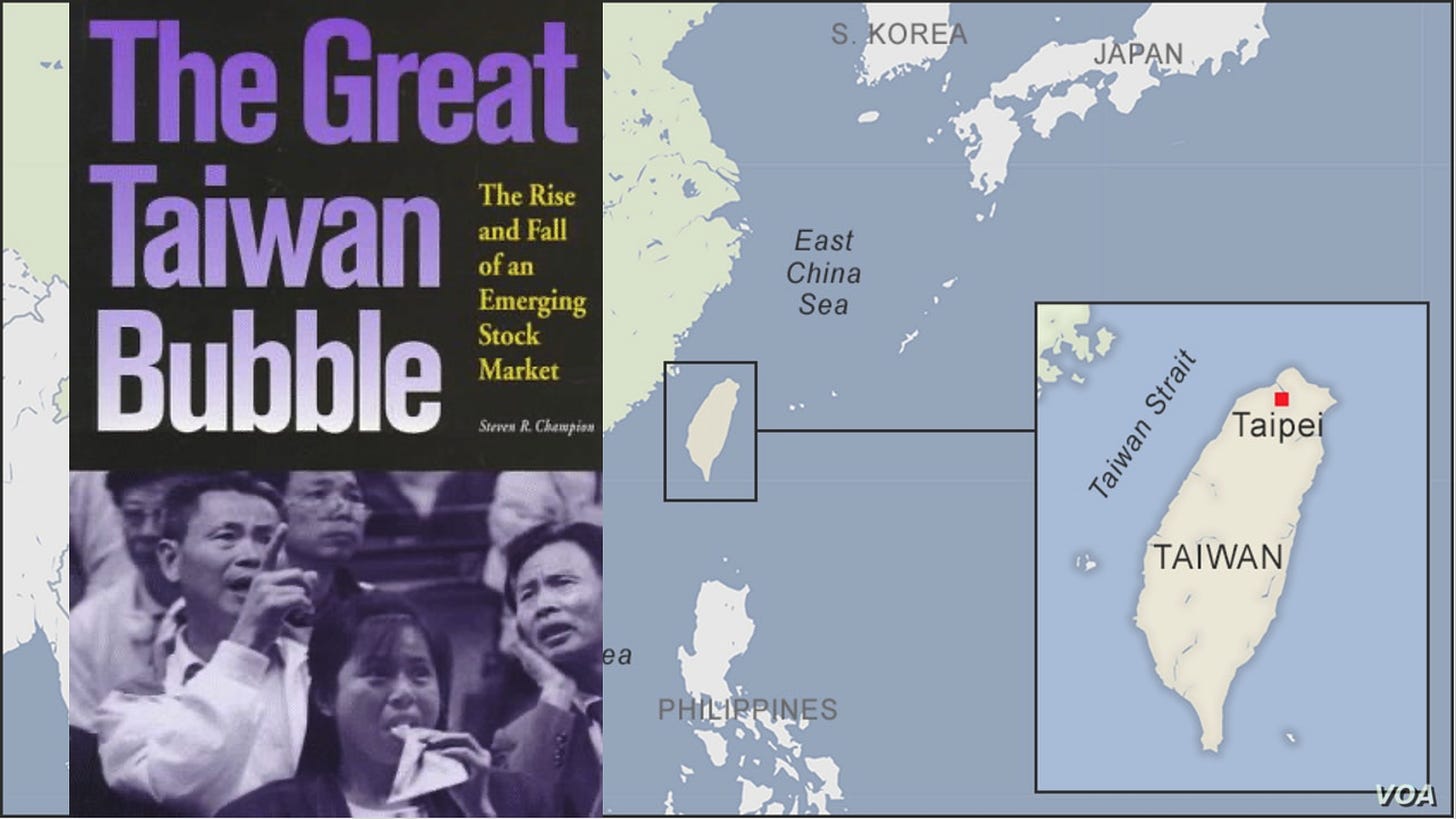






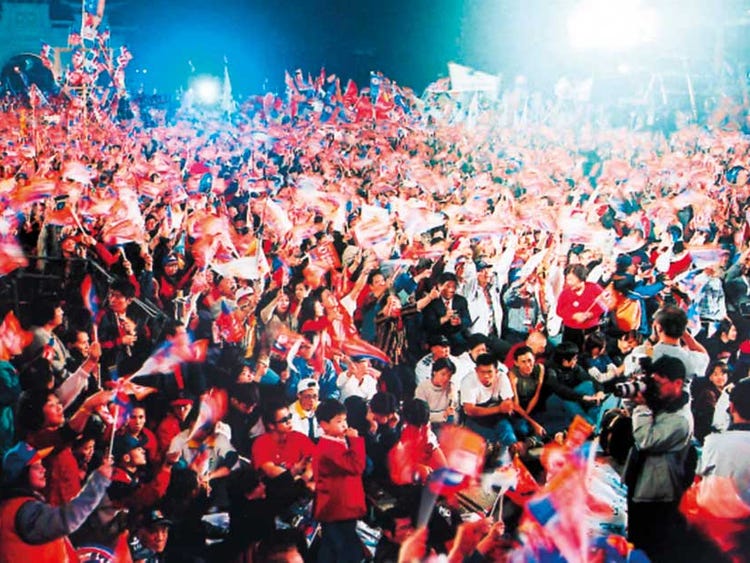



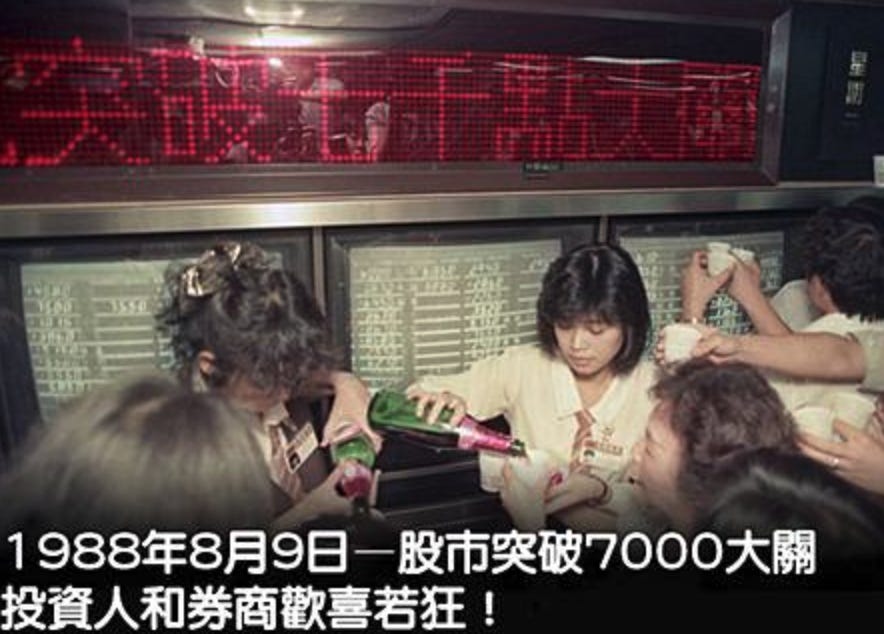




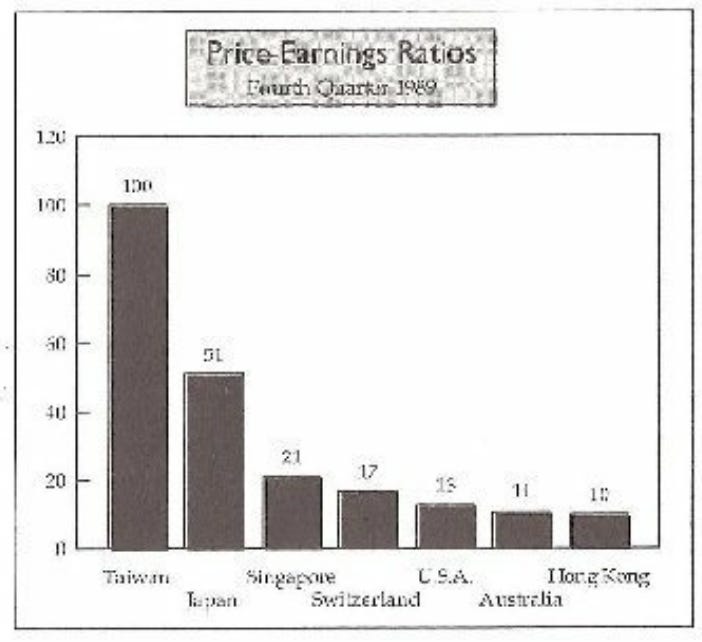

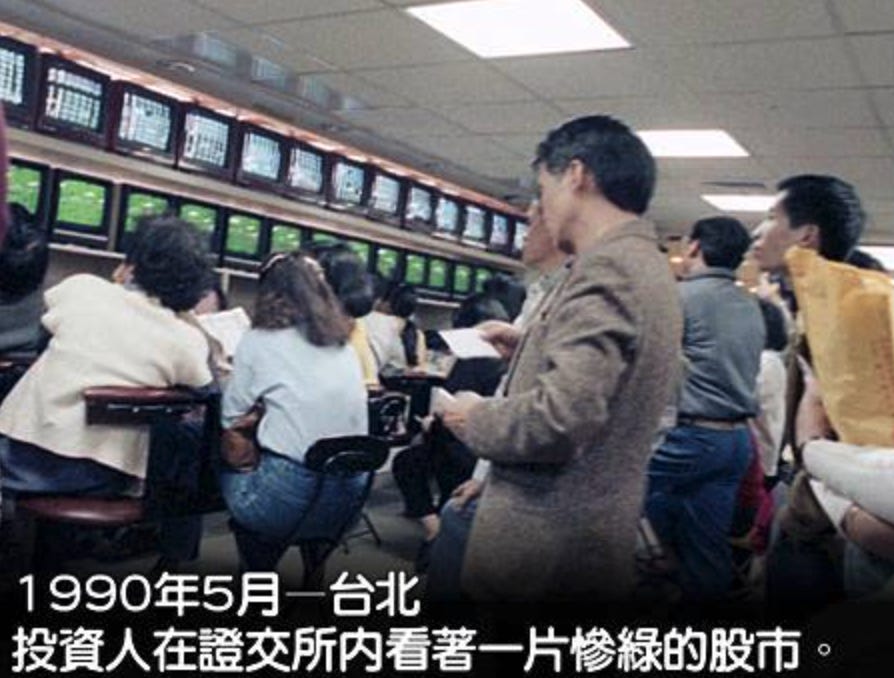





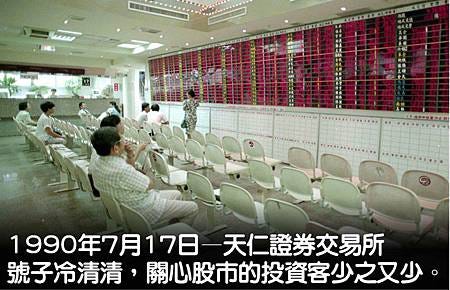






Nice story. Sometimes you gotta throw caution to the wind, catch the next bubble